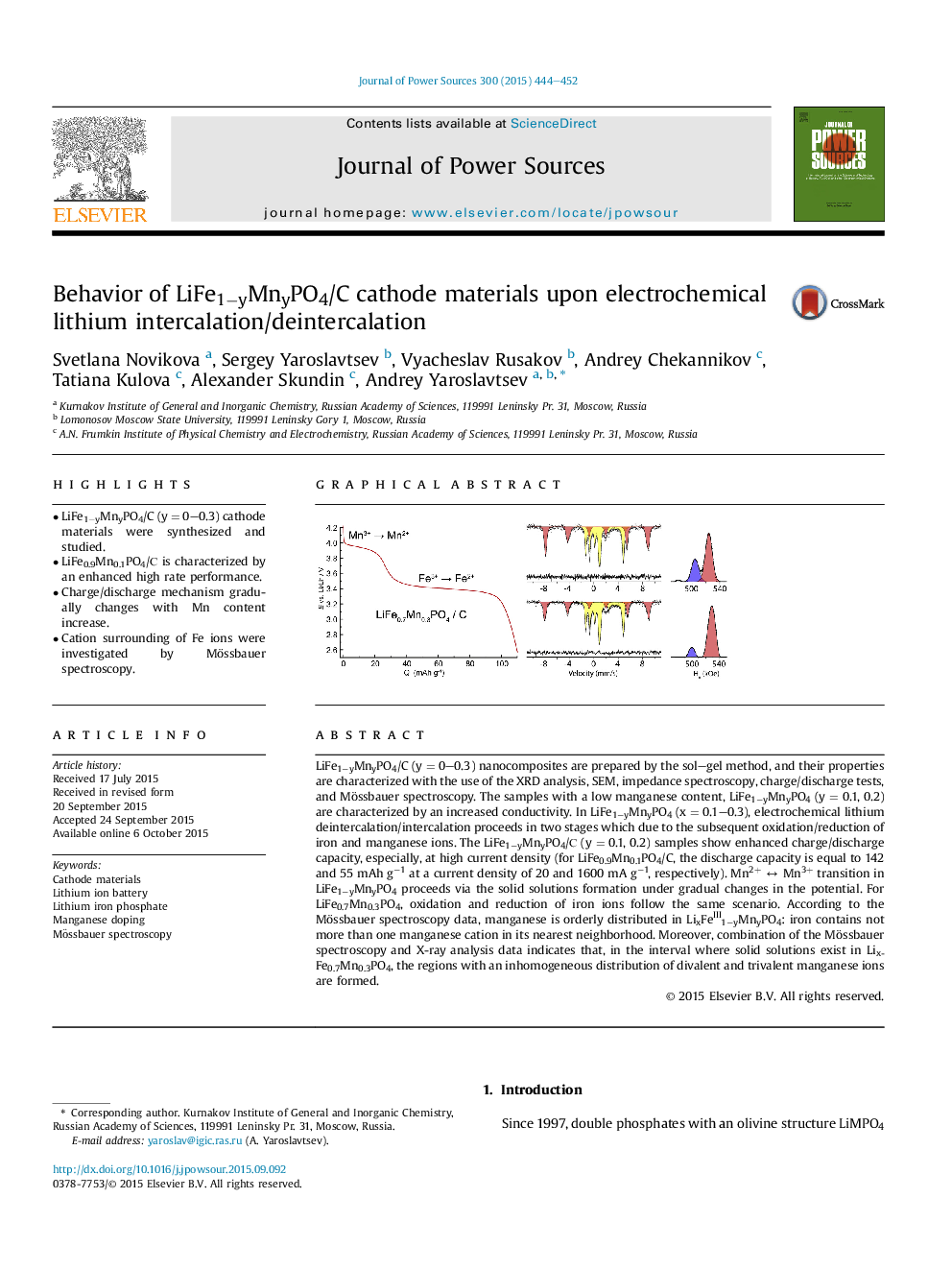| Article ID | Journal | Published Year | Pages | File Type |
|---|---|---|---|---|
| 1285805 | Journal of Power Sources | 2015 | 9 Pages |
•LiFe1−yMnyPO4/C (y = 0–0.3) cathode materials were synthesized and studied.•LiFe0.9Mn0.1PO4/С is characterized by an enhanced high rate performance.•Charge/discharge mechanism gradually changes with Mn content increase.•Cation surrounding of Fe ions were investigated by Mössbauer spectroscopy.
LiFe1−yMnyPO4/C (y = 0–0.3) nanocomposites are prepared by the sol–gel method, and their properties are characterized with the use of the XRD analysis, SEM, impedance spectroscopy, charge/discharge tests, and Mössbauer spectroscopy. The samples with a low manganese content, LiFe1−yMnyPO4 (y = 0.1, 0.2) are characterized by an increased conductivity. In LiFe1−yMnyPO4 (x = 0.1–0.3), electrochemical lithium deintercalation/intercalation proceeds in two stages which due to the subsequent oxidation/reduction of iron and manganese ions. The LiFe1−yMnyPO4/С (y = 0.1, 0.2) samples show enhanced charge/discharge capacity, especially, at high current density (for LiFe0.9Mn0.1PO4/C, the discharge capacity is equal to 142 and 55 mAh g−1 at a current density of 20 and 1600 mA g−1, respectively). Mn2+ ↔ Mn3+ transition in LiFe1−yMnyPO4 proceeds via the solid solutions formation under gradual changes in the potential. For LiFe0.7Mn0.3PO4, oxidation and reduction of iron ions follow the same scenario. According to the Mössbauer spectroscopy data, manganese is orderly distributed in LixFeIII1−yMnyPO4: iron contains not more than one manganese cation in its nearest neighborhood. Moreover, combination of the Mössbauer spectroscopy and X-ray analysis data indicates that, in the interval where solid solutions exist in LixFe0.7Mn0.3PO4, the regions with an inhomogeneous distribution of divalent and trivalent manganese ions are formed.
Graphical abstractFigure optionsDownload full-size imageDownload as PowerPoint slide
